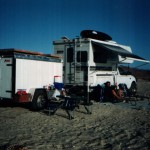
Boondocking is camping at a place, preferably free, with no hook-ups for water, sewer or electricity. Places like Federal Parks and Forests, LTVAs, on the beaches of Baja and in the Provincial Parks of Canada. To stay at these places, your rig must be self-contained. As the BLM states in its Supplementary Rules, Section 17, “Camping is in self-contained units only. Self-contained camping units must have a permanent, affixed waste water holding tank of 10-gallon minimum capacity. BLM does not consider port-a-potty systems, systems that utilize portable holding tanks, or permanent holding tanks of less than 10-gallon capacity, to be self-contained”.
Update: In addition to the above-mentioned places to stay for Boondockers, if you like being on the beach and temperate weather, you’ll love the Baja LTVA. Full-time RVers can spend the summer or winter season here at campsites that start at only $300 for the season for beach access and views and a double-wide 45′ site. You can contact the Baja LTVA with questions, make a reservation and securely pay online at [email protected] while their website. bajaltva.com, is under construction.
The art of boondocking is to be able to stay in one of those places for as long as possible without having to break camp as well as enjoying as many amenities as possible. While we love being out in the wild, we are not willing to give up our TV, electric coffee pot, refrigerator/freezer, computers, Internet and other conveniences. The Art of Boondocking is an accumulation of our experience living completely off the grid with solar for power, cell phones, sat phones, MiFi and various antennas for communication, Internet and over-the-air TV as well as satellite dishes for TV and Internet, to maximize our stay without giving up many of our creature comforts.
We’ve divided our Art of Boondocking into the following sections:
- Stay Small
- Maximum Stay
- Budget
- Solar
- Stay Kool
- Stay Warm
- Backup Plan
1: Stay Small
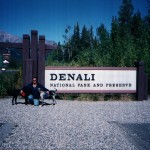
If you are planning to stay at Federal Parks and Forests, keep in mind that most Federal Campgrounds will only take RVs with a length of 20′ or so , as the sites were originally designed for tents. You are also limited access to many roads if you are over-sized, as it was assumed that tenters would be traveling in one maneuverable vehicle. We found this out when trying to camp at the great campgrounds we had read about in Denali Park, Alaska, where rigs over 20′ or towing trailers were denied access. We had a 12′ Lance camper but were towing an 8′ trailer, our solar power station. We had to stay in a campground that was basically a paved parking lot with pull-throughs and no length limits, right off the main highway. That was a real disappointment. While we chose 20 feet as the minimum we could use with us and our two Great Danes (please see our Camping with Two Great Danes article), only you can decide where you want to go and pick the RV that meets your needs.
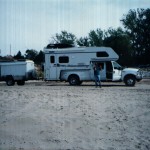
A note on towing a vehicle or utility trailer. Many parks consider the towed item to be part of the overall length and therefore subject to length limits. Also, some parks only allow one vehicle and as your motor home will count as one, you may not be allowed to bring your tow vehicle to your campsite. Having said that, some parks do have parking lots near their entrances where you can leave your tow vehicle while camping.
2: Maximum Stay
This is not such an easy question to answer as it will depend on many factors. For example,
- Will you have close access to water?
- Is there a dump station close by?
- How much gray and black water can you store?
- How long will your propane last?
- How long will your food last?
- Last but not least, what is the capacity of your solar system?
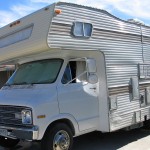
Our situation required two different answers to the “Maximum Stay” question. 1) When we were traveling throughout the Federal and Provincial Campgrounds, two weeks was the maximum we could stay without breaking camp, dumping and refilling with water. Our 7-1/2 gallons of propane would last much longer than two weeks, but we always topped off. 2) When at our lot in Mexico, we have a small septic system and access to slightly brackish water for washing and showers.
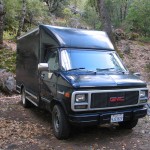
We also have a box van (our workshop) and external propane tanks that can be refilled in town. So if you own or rent a campsite with access to utilities and have a “get-about” vehicle so you don’t have to move your RV, there is no limit to the length of your stay. But if you’re traveling, two weeks is a good guideline to try and achieve.
We should note that we have optimized our motor home to maximize our stay which is detailed in, RV Hobo: Maximizing Your Stay (coming soon). Here is a summary of the best things to do:
- Have a solar system that meets your power needs.
- Use the solar system to minimize propane use, i.e., electric rather than propane refrigerator.
- Use a water recycling system where practical.
- Use paper plates, cups etc., to minimize water use.
- Have portable containers to lug water in and lug gray water out.
3: Budget
Everyone’s budget will differ. The biggest thing is to plan out what your expenses are and be as realistic as possible. Be sure to keep some money in reserve for emergencies and “rainy” days. We have a minimum budget we use available in the article, RV Hobo: Touring on a Budget (coming soon). We also highly recommend purchasing towing insurance with an accommodations rider or hotel discount, so your insurance will cover, or help cover, your hotel room if your RV takes more than a day to be repaired. After much research, we currently use Good Sam Roadside Assistance through Camping World. Although insurance is an extra expense that may never be needed, in the event of a breakdown, the expenses involved without insurance would certainly spoil even the best laid plans.
4: Solar
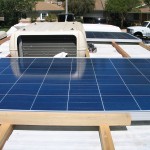
This is the heart and soul of Boondocking. A well-sized solar system, complete with hot water panels is, in our opinion, a requirement to both travelling on a budget and an enjoyable lifestyle while doing it. We have an all-electric refrigerator, led lights, three laptop computers, 24″ TV, Verizon MiFi (complete with a cell booster) Internet and an assortment of battery-powered power tools. Here is a list of what we are using. These items were bought after living and working off the grid in a remote location in Baja for over 10 years.
- 500 watts of 24 volt solar panels
- 4-300 AMP HR 12 volt deep cycle batteries
- 40 amp MPPT solar charger
- 1500 watt pure sign wave inverter
- smart 80 – 2 amp battery charger/converter
- 2 – 2’x2′ hot water panels
- RV Hobo Kool Kamper
- 3000 watt pure sign wave generator
Please be sure to check out the article, RV Hobo: Effective Solar (coming soon), for the how and why of all of this. What is most important to note is that we stay at many remote locations, well outside of normal cell tower range, with no hookups other than what we carry, and do so in style! We use our IP phones, have Internet access, watch TV and build and repair stuff on a regular basis. And both my wife and I work right from our ‘lil motor home which has a full computer network on board.
5: Stay Kool
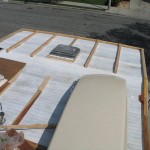
Most RVers will like to stay where it is warm. The desert LTVAs and Mexico Beaches are favorite destinations for many of us. Staying kool in the desert and at the beach is the subject of an entire article (coming soon). Remember that you will be off the grid and an RV cannot carry enough solar panels to run its air conditioner. Add to that the fact that the desert and beaches generally do not offer an abundance of shade. See the problem? The easy fixes found throughout the web are pretty obvious:
- Cook outside
- Vent your refrigerator, even add a fan
- Important: paint your roof white
- Install an awning and window awnings.
The “basics” are required, but for us, it wasn’t quite cool enough. We wanted to keep comfortable, or at least as comfortable as we could be. My wife has her masters degree in engineering and is a former JPL engineer. I was a Senior Computer Scientist at a Los Alamos Think Tank. Putting our heads together, we thought there has to be an inexpensive, efficient way to stay cool. This is a problem that has plagued us for years, including when we lived in our home in Baja Mexico where summers were in the very high 90s with humidity about the same.
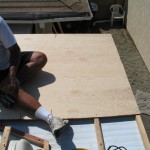
We found the answers for the RV Hobo Kool Kamper (article coming soon), not from the new state-of-the-art technology, but from the ancient world. These techniques have been used by everyone from the Romans to the Bedouins to keep kool. While the details of the RV Hobo Kool Roof (article coming soon) are available here on the RV Hobo Network, here is the short version:
- Slow down the RV’s absorption of the sun’s heat.
- Move air inside the RV.
- Draw air from the koolest source.
- Use evaporation to really kool things down (low humidity environment only).
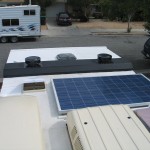
Now think about doing all of this with little (5 – 10 watts) or no draw on your solar system. We have developed a way to combine various ancient kooling techniques for use with an RV. We actually use the heat from the Sun to kool an RV, and we’re talking 10 – 30 degrees kooler! Sound too good to be true? See the article, RV Hobo Kool Kamper (coming soon). Anyone with minimal carpentry skills can create an RV Hob0 Kool Roof himself. Our cost was less that $400. An RV Hobo Kool Roof will solve problems for those RVs with leaking roofs, or RVs with older roofs that don’t have plywood underneath and can’t be walked on. An RV Hobo Kool Roof will also strengthen your roof which is a must for a solid solar solar system installation.
6: Stay Warm
Yes, even Baja and Southern California can get cold! While staying at all of those nice, warm southern locations, we have endured many a cold night, and even a few unexpected cold days. Checking average temperatures for the months you’re intending to stay will give a good indication of what to expect.
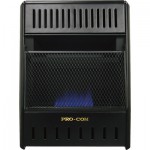
Like most RVs, our standard RV heater used far too much electricity, so we removed ours and replaced it with a propane heater. In reality, most of the time we needed heat was when we got up in the morning. Experience taught us that we turned the heat on for an hour or so, then the sun warmed things up. But there are times when you need heat throughout the night. Being in the over-regulated state of California, we couldn’t get our first choice of propane heater, the ProCom Vent-Free Heater. This was the one we used in our office trailer in Massachusetts for three winters. We ended up buying a Mr Heater instead, which worked fine for warming up mornings, but without a thermostat, was not suitable for leaving on at night, since it would burn through a small propane bottle within four hours. As soon as we got out of California, we purchased our first choice, the ProCom Vent-Free Heater, complete with thermostat and a connection hose that we adapted to our RV. One of the side benefits we enjoy from this heater is watching it when lit, kind of like watching a fireplace.
Please see the article, RV Hobo: Staying Warm in Style (coming soon) for the details and how-to. We did one other thing with our heater that really made a difference. Since the ProCom does not have a fan, we installed a couple of small, low-wattage fans to blow the heat from the ceiling back to the floor. This not only made us very comfortable, it significantly reduced the amount of time the heater came on, resulting in lower propane use and costs.
7: Backup Plan
Everything, with a little maintenance, works just as planned for us. But, as the saying goes, even the best laid plans often go awry. Consider the following:
- No Sun
- No Cell Reception
- You Breakdown
- Air Conditioning
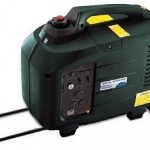
No Sun. With no sun, our choice of using a 4.5 cubic foot, electric-only, Energy Star refrigerator is already in jeopardy. For this reason, we would never use an all-electric refrigerator without a backup generator and smart solar battery charger/converter. You will have cloudy days or be in a campsite covered by trees, so be prepared. See the article, RV Hobo: Solar and the Generator (coming soon). The backup generator is used to recharge the solar batteries. Even in the worst of cases, 2 – 4 hours of running the generator daily will meet all of our electric needs.
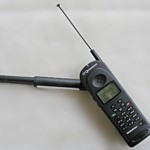
No Cell Reception. Even with our cell booster, it is a frequent occurrence to not have cell reception which is also needed by our MiFi Internet connection. Most of the time we can get by without it, as we have an Intranet Web Server so we can keep writing articles for you. But the long and short of it is, what happens in an emergency, when you are in the boondocks with no cell reception? As a solution, we keep a minimum subscription with our Globalstar Sat Phone. We have used this phone from above the Glaciers in Alaska and Northern Canada all the way to Baja Mexico. Check out the RV Hobo: Globalstar Sat Phone article.
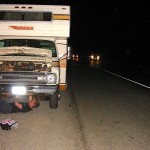
You Break Down. If you break down far from civilization, the costs of repairs can be staggering, but the towing and lodging costs can more than double your breakdown costs. This can ruin your trip. We use Good Sam Roadside Assistance through Camping World which includes discounts for hotels and rental cars. Whatever you choose, make sure it will cover where you expect to travel. Good Sam touts service anywhere in the US, Canada, Mexico, US Virgin Islands and Puerto Rico.
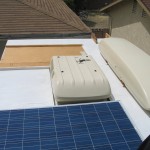
Air Conditioning. I was contemplating removing our RV’s air conditioner when my wife stepped in. She brought up the recent and unexpected hot spell we had just had. While our RV Hobo Kool Kamper works great, when temperatures sore above 100 degrees (we’ve experienced 130 degrees in Baja) in a humid area, you’re still going to get really hot. Because our destinations were so varied, we elected to change our generator purchase from a 2000 watt generator to a 3000 watt generator that could run our air conditioner. We also installed a separate plug for the air conditioner, off of the solar system. We figured if it were that hot we would have an abundance of Sun. This allowed things to work normally and the generator to power the A/C. This also works in campgrounds with electric hookups.
